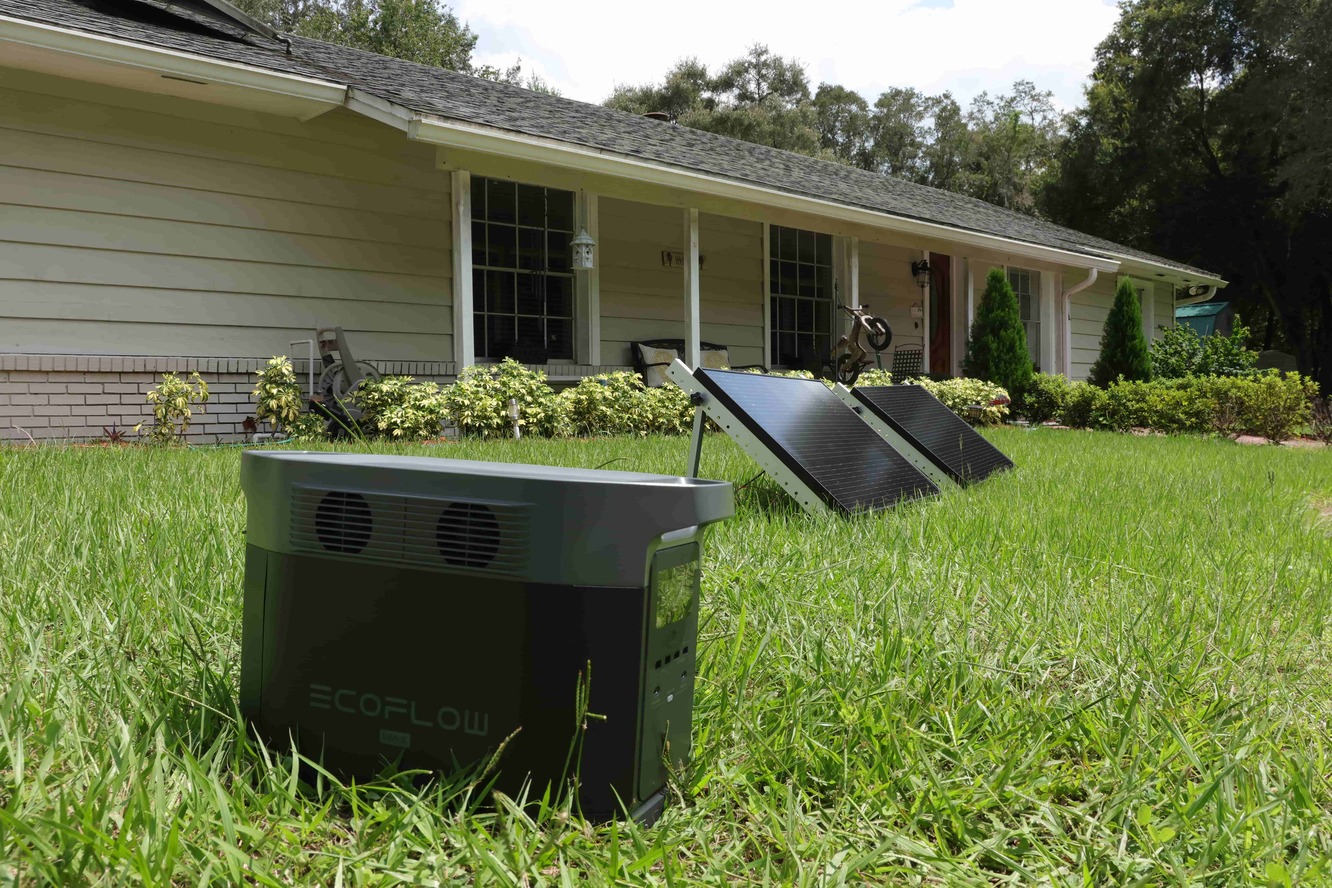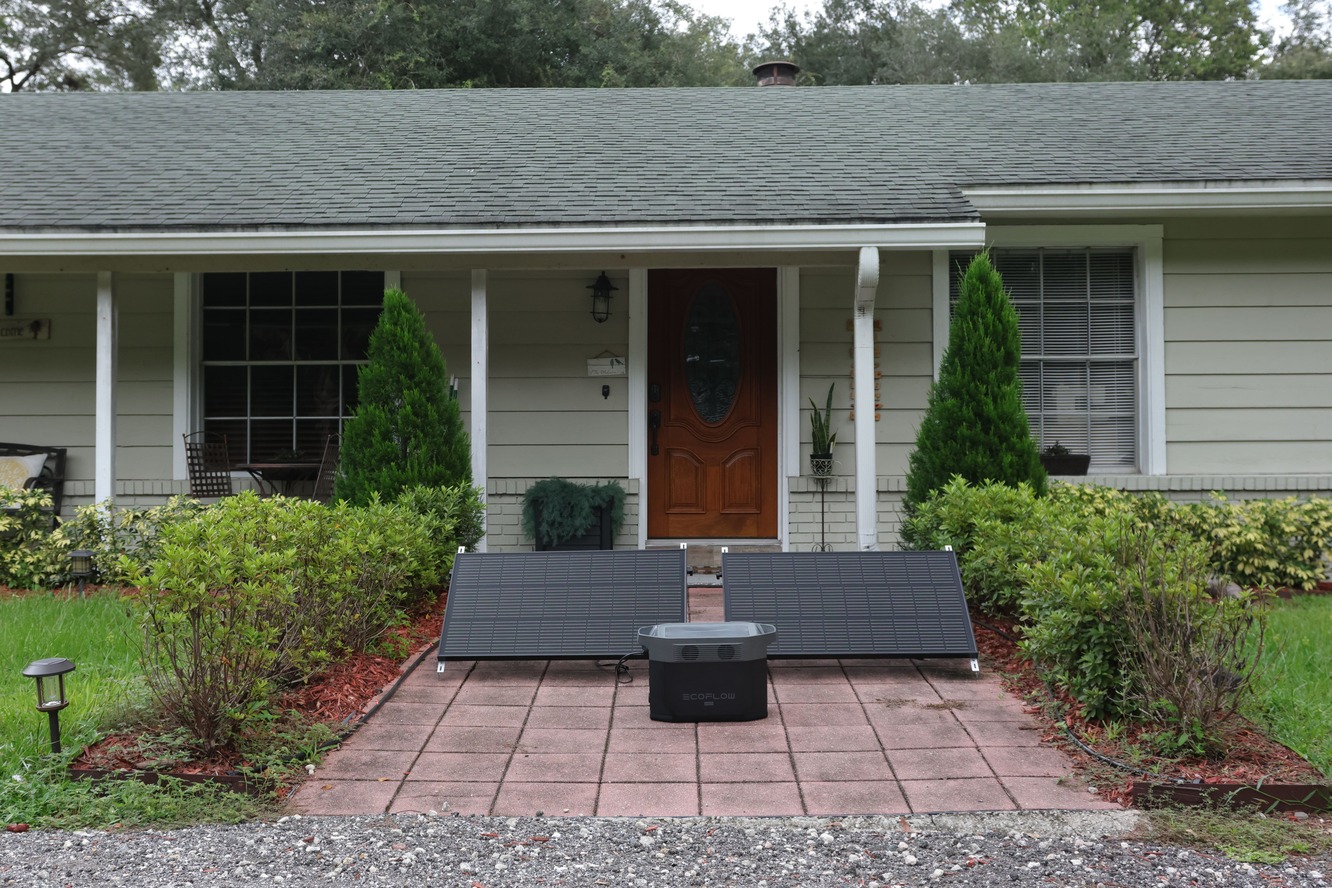- What is a Transparent Solar Panel?
- What is a Black Solar Panel?
- What’s the Difference Between Transparent & Black Solar Panels?
- How to Choose: Transparent or Black Solar Panels?
- Portable Solar Solutions from EcoFlow: Built to Perform
- Making Your Final Decision: Which Solar Panel Is Right For You?
- FAQ about Solar Panel Selection
Transparent vs. Black Solar Panels: Which Should You Choose for Optimal Style and Power
- What is a Transparent Solar Panel?
- What is a Black Solar Panel?
- What’s the Difference Between Transparent & Black Solar Panels?
- How to Choose: Transparent or Black Solar Panels?
- Portable Solar Solutions from EcoFlow: Built to Perform
- Making Your Final Decision: Which Solar Panel Is Right For You?
- FAQ about Solar Panel Selection
When comparing solar panels, often you’ll meet two types: transparent and black solar panels. Judging from names, their difference seems mostly visual—but the color signals deeper differences in performance, design use, and flexibility. And how can you choose based on your special needs? This guide will talk about transparent solar panels and black solar panels, their differences, and most importantly, help you to make the decision that meets your demands.
What is a Transparent Solar Panel?
Firstly, a transparent solar panel is transparent, of course. It is a type of solar technology that allows visible light to pass through while capturing energy from ultraviolet and infrared light. Unlike traditional black panels that block all light, transparent panels use thin-film materials like amorphous silicon or CIGS, which make the panel appear clear or lightly tinted. This design allows them to function as both a window and a power source.
Because of their appearance, transparent solar panels are often used in buildings where aesthetics and natural light are important. They can be integrated seamlessly into glass facades, skylights, sunroofs, or greenhouses—generating clean energy without changing the look of the structure. While they provide a unique solution for adding solar to spaces where solid panels wouldn’t work, their power efficiency is lower than black panels.


What is a Black Solar Panel?
Black is the classic, traditional look of solar panels. They are made using monocrystalline silicon cells, which are cut from a single, pure crystal structure. This material makes the panel look deep, black and smooth. Plus, a special coating on top cuts down light reflection and helps the panel take in more sunlight.
For appearance, black solar panels are typically solid and opaque. They do not allow light to pass through and are designed with a backsheet that is also black, creating a fully dark, consistent look across the entire surface. This design can not make it double service as a window, but the practicality of pure black brings another kind of beauty, isn’t it?
What’s the Difference Between Transparent & Black Solar Panels?
Upon the basics, the following chart gives you a clearer understanding of their differences and respective scenarios of use.
| Feature | Transparent Panels | Black Panels |
| Appearance | Semi-transparent, good for facades and skylights | Solid black, sleek look for rooftops and portable use |
| Conversion Efficiency | Lower (1–5%), some light passes through | Higher (15–23%), absorbs nearly all light |
| Installation Scenarios | Built into windows, facades, skylights | Rooftops, ground-mounted systems, portable kits |
| Heat Resistance | More heat-tolerant, but lower overall output | Slight drop in high temperatures |
| Materials & Lifespan | Thin and flexible, may age faster | Rigid and long-lasting construction |
| Cost and Maintenance | Lower cost, more flexible to install | Higher cost, better long-term value |
| Aesthetic Integration | Blends well with modern architecture | Clean look for traditional or mobile use |
| Portability | Not portable (built-in use) | Highly portable, ideal for outdoor and emergency use |
So which feature do you care about the most? You can choose based on your core concerns. But basically, each type has their most outstanding edges: transparent-beautiful; black: powerful.
How to Choose: Transparent or Black Solar Panels?
Depending on your priorities, you can look at solar panels through two main lenses: style and power. Use the guide below to help narrow your choice.
For Style
You want solar panels that blend into architecture, maintain natural light, and support design-focused projects like greenhouses or glass-walled buildings. — Choose Transparent Panels.
For Power
You need strong, reliable output from limited space and want a system that supports rooftops, ground mounts, or portable setups—including off-grid living, travel, and backup use. — Choose Black Panels.


Which Type Suits You Best?
Homeowners
Care about energy output, roof compatibility, appearance, and savings.
→ Black panels are a better fit. Pairs well with EcoFlow solar kits for backup or daily use.
Architects / Designers
Focus on integration with glass, modern design, and visual aesthetics.
→ Transparent panels are ideal, though they trade efficiency for looks.
Outdoor Users / Campers
Value portability, reliability, waterproofing, weight, and compatibility with power stations.
→ Black foldable panels are the top choice. EcoFlow solutions are designed for this use.
Portable Solar Solutions from EcoFlow: Built to Perform
If you are a person chasing practicality, EcoFlow’s black monocrystalline solar panels are a dependable choice for anyone who needs clean, portable energy— for road trips, emergency backup, or everyday off-grid living.
The 100W, 160W, 220W, and 400W panels in the EcoFlow lineup are designed for fast setup and easy transport. With a conversion efficiency of up to around 23%, they deliver strong performance in a compact form. Each panel is built with durable ETFE coating and rated IP68 for dust and water resistance, making them suitable for outdoor use in a variety of conditions.
Key features of EcoFlow Portable Solar Panels include:
Efficient Energy Conversion
EcoFlow solar panels use high-efficiency monocrystalline silicon cells, offering up to 23% energy conversion. This allows you to collect more energy even on shorter daylight days or in cloudy weather.
Durable and Weather-Resistant
Thanks to an ETFE protective film and IP68 waterproof rating, these panels resist scratches, UV exposure, and water spray. They’re built to last in rugged environments—on the ground, at camp, or beside your vehicle.
Lightweight and Foldable Design
EcoFlow panels are easy to carry and store. The 100W and 160W models fold flat and include a built-in handle for transport. Even the 400W panel, while offering high output, is designed to collapse into a compact form for vehicle or garage storage.
Compatible with EcoFlow Power Stations
All EcoFlow solar panels connect seamlessly with EcoFlow portable power stations, including the RIVER and DELTA series. They support fast solar charging to keep your devices, appliances, or tools powered anywhere.
Quick Setup with Adjustable Kickstands
Panels include integrated kickstands so you can angle them toward the sun in seconds for optimal exposure and maximum charging performance. From camping in the woods to working remotely or staying prepared for storms, EcoFlow’s portable solar panels are a reliable way to keep energy close—without needing rooftops, wiring, or fuel.
Making Your Final Decision: Which Solar Panel Is Right For You?
Transparent and black solar panels solve different problems. One gives you flexibility in design. The other delivers high power in a small footprint.
When you compare solar panels, think about space, style, sunlight, and how you plan to use the power. Black panels make sense for most home and mobile users. Transparent panels support energy goals where glass and design come first.
EcoFlow’s black solar panels bring efficiency, flexibility, and lasting performance—especially for those who need portable energy that works wherever they go.
Explore EcoFlow’s portable solar options today and bring reliable solar power into your daily life—at home or on the move.
FAQ about Solar Panel Selection
Q1: Do transparent solar panels work better in hot weather?
Transparent panels can handle heat a bit better because they let some light pass through, so they don’t get as hot. But they make less electricity overall. So even if they stay cooler, they still produce less power than black panels.
Q2: Which costs more over time—transparent or black solar panels?
Transparent panels might cost less at first and are easier to install in some places. But they don’t last as long and don’t make as much power, so you pay more for each unit of energy in the long run. Black panels cost more upfront, but they last longer, work better, and give you more value over time.
Q3: Do transparent panels need special setup?
Yes. If you want to use them in windows, skylights, or walls, you need to plan carefully. You have to check the building’s structure, the kind of glass used, and follow local rules. A pro team is needed to install them safely.
Q4: Why does EcoFlow focus on black solar panels?
EcoFlow chooses black panels for portable and off-grid use because they make more power, are tougher, and last longer. For outdoor trips or backup power, black monocrystalline panels give the strong, steady performance people need.